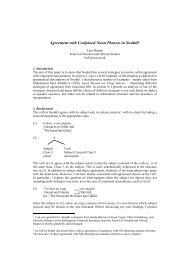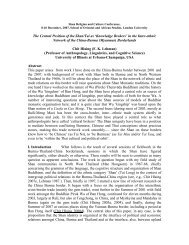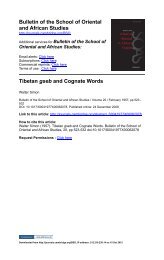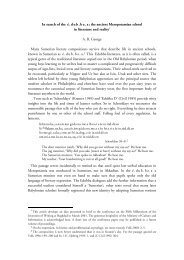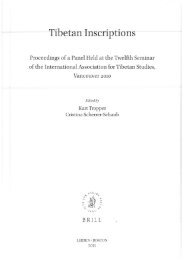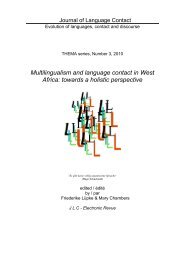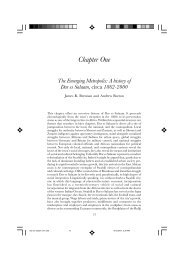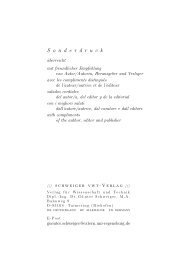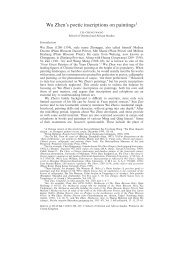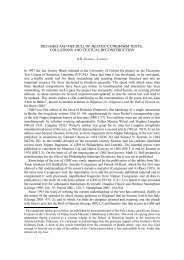Download (549Kb) - SOAS Research Online
Download (549Kb) - SOAS Research Online
Download (549Kb) - SOAS Research Online
You also want an ePaper? Increase the reach of your titles
YUMPU automatically turns print PDFs into web optimized ePapers that Google loves.
74 Warfare and Poetry in the Middle East<br />
expansion, an empire covering most of Anatolia and northern Syria from<br />
around 1350 bc. It was a Hittite king, Mursili I, who sacked the city of<br />
Babylon in the sixteenth century bc, although the expedition to this distant<br />
city of Mesopotamia can be called little more than a raid 4 .<br />
Periodic Hittite adventures into Syria are documented at least from<br />
the time of Mursili’s predecessor, Hattusili I, and continued sporadically<br />
through to the time of the fifteenth century bc king Tudhaliya I, who also<br />
campaigned extensively in western Anatolia. However, Hittite history was<br />
constantly shaped by the environment in which it was played out, with a<br />
centre high on the Anatolian plateau and roads being impassable for much<br />
of the winter. They were separated from Syria by the Taurus Mountains and<br />
from much of the rest of Anatolia, especially the west, by similarly intractable<br />
terrain. Temporary Hittite gains abroad were frequently thwarted<br />
by their inability to control events at home, where they were repeatedly<br />
threatened by other Anatolian ethnic, tribal and regional groupings.<br />
This cycle of conquest and loss was effectively cut short by the Hittite<br />
king Suppiluliuma I in the late fourteenth century bc. He established his son,<br />
Piyassili, as a viceroy in Karkamish on the Syrian Euphrates, from where a<br />
dynasty of his descendants controlled Hittite affairs in Syria, including the<br />
conclusion of a famous peace-treaty with the Egyptian pharaoh Ramesses<br />
II. The dynasty survived even until after the demise of Hittite rule in central<br />
Anatolia. The Late Bronze Age Hittite Empire disappeared in the general<br />
conflagration that weakened civilisations around the Ancient Near East in<br />
the twelfth century bc. When written documents become available again<br />
in Iron Age Syria, Cappadocia and Malatya, the script that they use is<br />
Anatolian Hieroglyphic, and the language in which they write is entirely<br />
the related Anatolian language known as Luwian. 5 Hittite and its speakers<br />
had vanished from the historical stage.<br />
WHAT DID THE HITTITES WRITE?<br />
The archives at Hattusa, stemming mainly from the find-contexts of a large<br />
temple, Temple I, as well as from the royal palace on the citadel, known<br />
in Turkish as Büyükkale, have brought forth cuneiform documents in a<br />
wide variety of the languages that were in use during the Late Bronze Age<br />
in the Ancient Near East. Beside Hittite we have Akkadian, the language<br />
of international diplomacy and scholarship; Sumerian, the language for<br />
which the cuneiform script was developed, and which had clearly died<br />
out by the time of the Hittite archives, remaining only in scholastic use;<br />
03_Warfare&Poetry_Ch3_073-098.indd 74 06/02/2013 10:15



